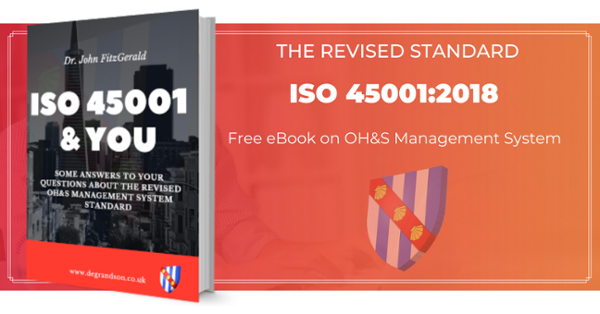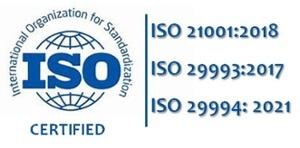Even the smallest organization has a lot to gain from a certified Occupational Health and Safety Management System (OHSMS).
New businesses often ponder the benefits of ISO 45001 Certification and, being busy with start-up priorities, postpone certification until it is asked for in a tender document or by a prospective customer.
At that point, it is, of course, too late. Optimistically, it takes a minimum of 5 months to get certified by which time the opportunity is lost.
You should be proactive about health and safety at work (the law requires it) and the list of benefits here can be used to persuade yourself and colleagues to get started sooner rather than later down the road to ISO 45001 Certification.
10 Practical Benefits of Safety Compliance
While helping to prevent the injury or death of a colleague tops everyone's list, here are 10 more benefits that SMEs certified to the latest version of ISO 45001 and others will enjoy.
- Recognized reputation as a safe place to work and you have the internationally-recognized Certificate to prove it,
- Larger pool of qualified candidates applying to work with your business because of this reputation,
- Reduced absenteeism and employee turnover rates as employees have objective reasons to feel safer at work,
- Improved ability to respond to regulatory compliance issues with an improved relationship with the regulatory authorities as a consequence,
- Reduced cost of OH&S incidents as you have a system in place to prevent their recurrence,
- Reduced downtime and the costs of disruption to operations because of fewer OH&S incidents and, when they occur, they are dealt with systematically and efficiently,
- Reduced cost of insurance premiums as insurance companies recognise that certified businesses make fewer, and less costly, claims,
- Peer recognition for having achieved an international benchmark, which in turn influences current and potential customers who are concerned about their social responsibilities)
- Improved scoring in pre-tender documents (especially from public sector organizations): helps ensure that your organization gets a chance to compete with established businesses.
- Reduced fines if prosecuted as your certification constitutes objective evidence to a court of the seriousness with which occupational health and safety are treated.
So, if you haven’t got certification to ISO 45001:2018, or you need ‘ammunition’ to persuade your colleagues, you now have 10 good reasons where the financial benefits, as well as the practical ones, can be calculated. Your staff will thank you for it.
When is the right time to get certification for safety compliance?
Let's distinguish between managing health and safety and having a formal OH&S Management System. As processes are established as part of a start-up, you'll need to address the control of workplace hazards as they are realized with OH&S risk management activities.
And so by the time you think about going forward for certification, a lot of the foundation work (in the form of risk assessments, for example) will already have been completed.
As soon as processes and procedures are bedded in, you can start your certification project. You definitely won't regret it knowing that the health and safety of colleagues are under control and in line with both legal and regulatory requirements. And you'll have your ISO 45001 Certificate as proof of your commitment and achievements regarding OH&S.
And start with some relevant training
If you're wondering where to start with certification, begin by considering our ISO 45001 courses, particularly our ISO 45001 Lead Implementer Course. You may also want to check out the other posts we have published about this standard (search 'News' for 'ISO 45001').
Related Articles
deGRANDSON Global is an ISO Certified Educational Organization
We have chosen ISO 21001 certification because, unlike IRCA and Exemplar badges (which in our opinion are commercially compromised), it is based on independent third-party assessment. It is a ‘university grade’ standard in use globally by schools, colleges, and universities to demonstrate their competence.



